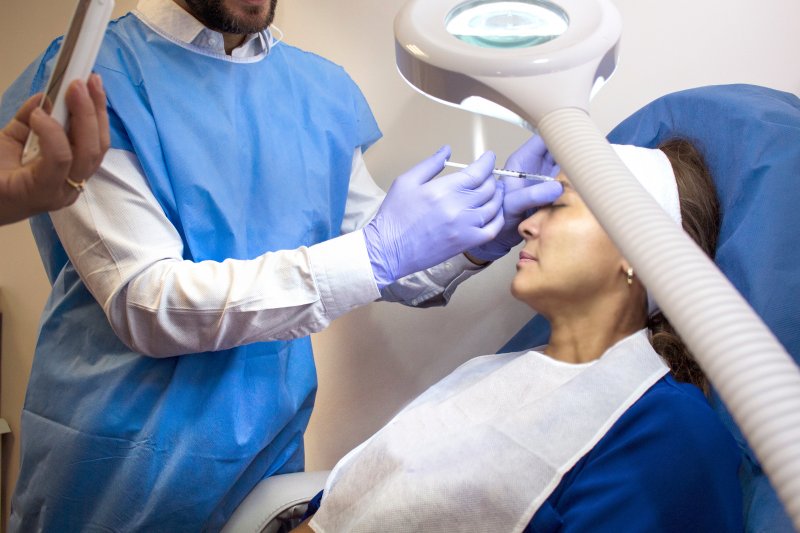
Chronic jaw pain and migraine headaches can be debilitating without treatment. The discomfort and inability to live a normal life can begin to take its toll. Patients who struggle with one or both of these issues may wonder if a solution exists that can help manage the pain. Fortunately, Botox can be a welcome relief. But why see a dentist for Botox? Keep reading to learn why it’s in your best interest to see an oral healthcare provider when choosing an injectable treatment.
What Makes a Dentist the Right Person to Administer Botox?
When thinking about who is qualified to administer Botox injections, you might assume that a dermatologist or a plastic surgeon are the only professionals equipped to do the job. A dentist may not be high on your list, but what you may not realize is that the individual who takes care of your teeth and gums can also be the one who helps alleviate jaw and head pain with Botox.
Dentists spend years learning the intricacies surrounding patients’ oral and facial structures. Because administering local anesthesia is a normal component of daily treatment, they must be able to recognize and navigate the inner workings of blood vessels, nerve pathways, and more.
This means that because of their advanced training and experience as well as their ability to treat issues that form inside the mouth, the jaw, and the surrounding oral and maxillofacial areas, they are often some of the most qualified to administer Botox injections.
How Can Botox Be an Effective Form of Treatment for Pain?
Most people view Botox as a cosmetic solution designed solely for the elimination of fine lines and wrinkles. However, this versatile solution is also capable of targeting muscles that tend to cause increased pressure in areas around the jaw and head, resulting in migraines and temporomandibular joint (TMJ) disorder.
When injected into the appropriate area(s) of the face, the botulinum toxin spreads and temporarily freezes the muscles. As a result, it forces them to relax, keeping excessive pressure off jaw joints. This can be life-changing for patients who struggle with lockjaw, teeth grinding and clenching (bruxism), migraines, and increased neck and shoulder pain.
Turning to Botox as a way to achieve relief from the symptoms of TMJ is a worthwhile solution because of its ability to help you live your best life. When choosing a professional to help you achieve this goal, make sure to see your dentist. Their expertise and attention to detail will ensure that you get the results you deserve.
About the Author
Dr. Joanne Bancroft earned her dental degree from the State University of Buffalo School of Dental Medicine in 2002, and she completed a General Practice Residency at the University of Colorado School of Dental Medicine. Providing Botox for her patients, she is skilled and able to produce results that help individuals feel more confident in their appearances. Contact us at (720) 458-6561 to find out how we can help you.
